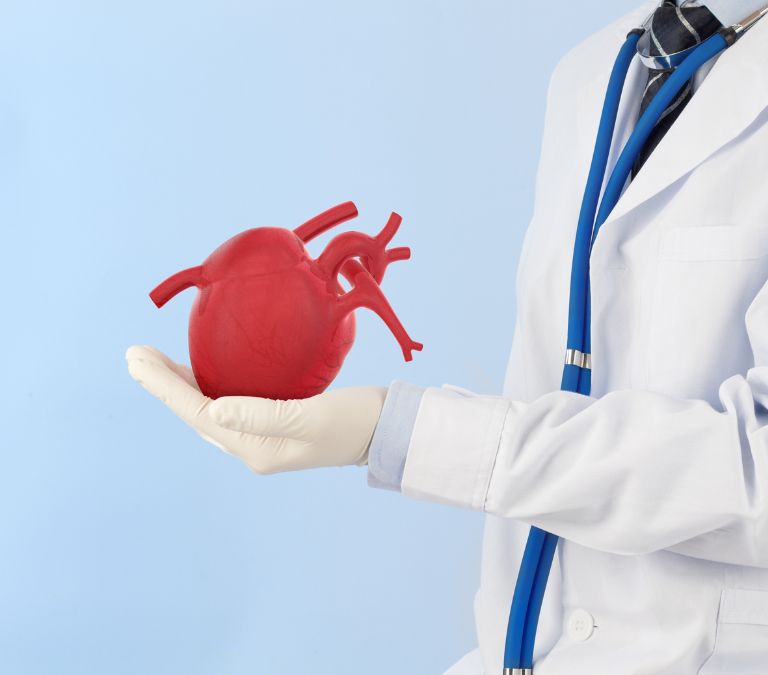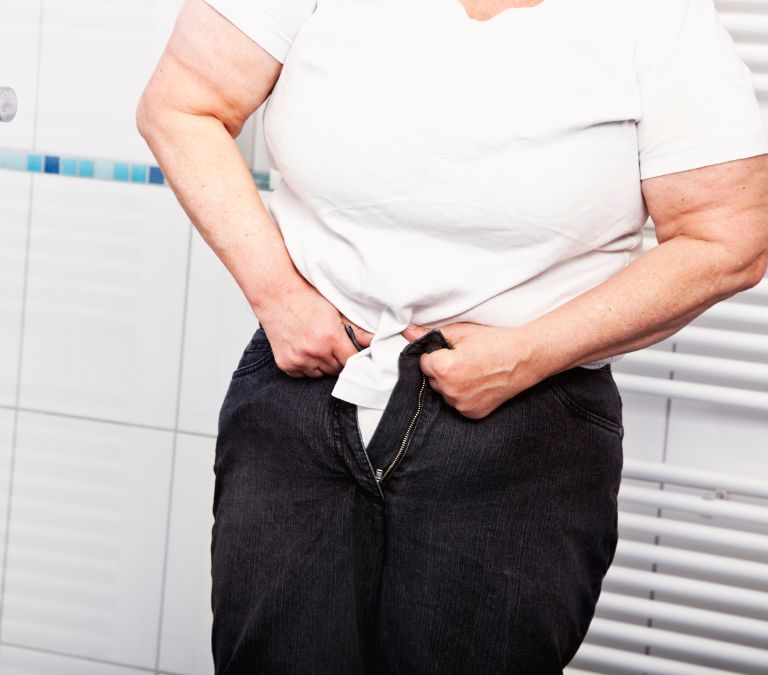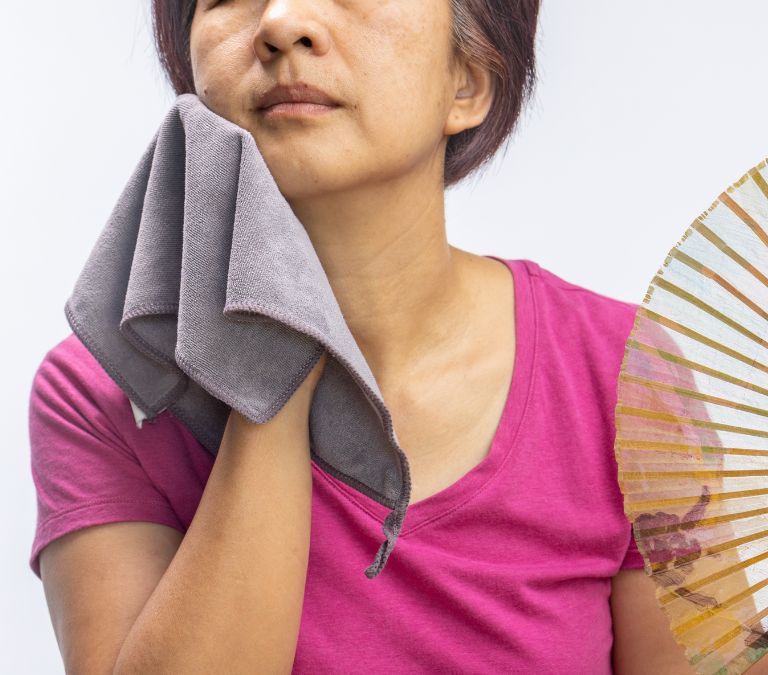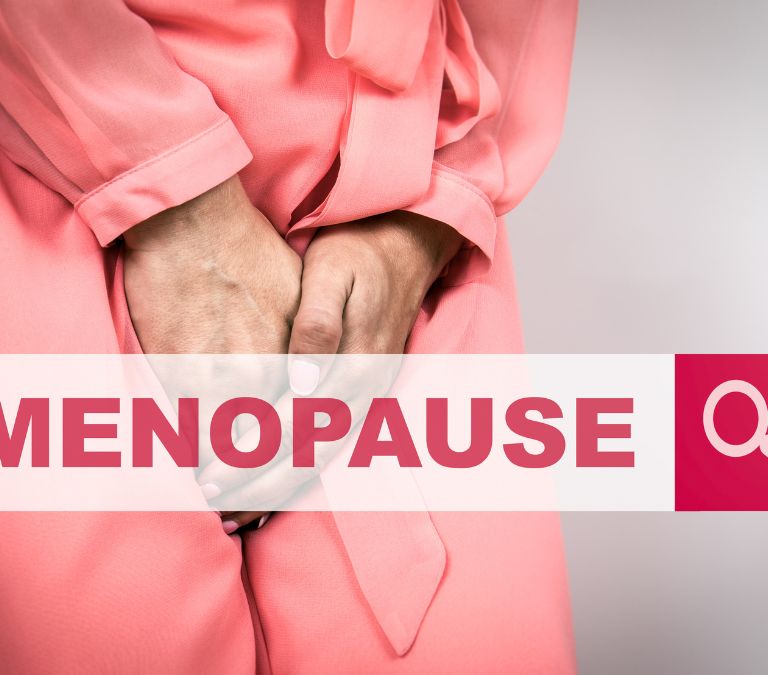For most women, menopause is a phase of life they are biologically obligated to pass through. And for most of them, menopause implies a cessation of the menstrual cycle. But this isn’t the entire truth. The events leading to menopause and the onset of menopause are attributed to many physiological changes that occur without being seen.
One such change is the reduction in the level of certain hormones. These hormones keep the menstrual cycle regular, but they also play additional roles in the body. Estrogen, for example, plays an important role in fat distribution, among other roles. When, due to menopause, there is a reduction in the blood levels of this hormone, these roles are left unattended, and the effect is almost always disadvantageous.
Coupled with the fact that age is a risk factor for most diseases, menopausal women are considered high-risk individuals for various diseases, with the risk heightened because they are aging too. This makes the health risks they face unique and an interesting case study. This article will look at ten of the health risks that menopausal women are likely to face due to their menopausal state.
- Heart Disease

Before menopause, the highest health threat a woman faces is breast cancer, but after menopause, the story becomes different. Their most significant health risk becomes heart disease. Research has shown that nearly a third of women suffer a cardiovascular disease at least once. Thus rate increases as they go beyond menopause. This rise in cardiovascular diseases among women undergoing menopause is due to the reduction or cessation of the actions of the hormone estrogen.
Estrogen is a hormone that works to maintain the flexibility of the blood vessels. Blood flow through the blood vessels will sometimes require an expansion or contraction of blood vessels. These blood vessels maintain their flexibility due to the action of estrogen on them.
Menopause brings with its occurrence a reduction in the level of estrogen that can be found in the body, and what this means is that the flexibility of the blood vessels is reduced. Combined with other factors that accompany aging, this lack of flexibility makes the heart of the menopausal woman susceptible to breakdown.
Various researchers have noted that the risk of developing heart disease among menopausal women is directly proportional to the number of hot flashes they experience. Hot flashes are symptoms of menopause that occur due to a reduction in the body’s estrogen level. Therefore, if a menopausal woman seems to be having frequent hot flashes, then a visit to the doctor might be necessary.
It might also be a good idea to visit the doctor if there is a history of heart disease in the family. This way, health providers can start early to combat the disease.
How Do We Reduce The Risk of Heart Disease During Menopause
There are a lot of factors contributing to the occurrence of heart diseases that we cannot control. For example, family history, aging, and even menopause cannot be controlled or stopped. Still, women can take some actions to reduce the risk of suffering from heart disease during menopause.
One of the ways they can do this is by living a heart-healthy lifestyle. This includes reducing or eliminating refined sugars from their diet, eating vegetables, and abstaining from meat. They should also start practicing habits that help the heart, like taking walks and exercising and give up habits that are detrimental to the heart, like smoking.
Women are also advised to get to know their bodies well and keep tabs on the pointers of heart disease their bodies might be showing them. Women are advised to check their blood pressure, cholesterol, body mass index, and blood sugar level steadily.
The occurrence of heart disease has been linked to the reduction of estrogen levels in menopausal women, but this does not mean that hormone replacement therapy reduces this risk. No research has shown any indication of this. So far, the only way to reduce the risk of postmenopausal heart disease is by living a heart-healthy lifestyle.
- Osteoporosis

Osteoporosis is a condition that affects the skeletal structure of the body. It weakens the bones, making them a lot more susceptible to breakage. Unfortunately, it is a very silent disease. It is often not diagnosed until a break occurs in a body part that shouldn’t have occurred.
Women are more likely to get this disease than men are, with research showing that women are four times as likely to suffer from it as men are. The major sign of osteoporosis is histological thinness and weakness of the bones, which leads to easier fracturing. While this susceptibility is originally high in women, it gets even higher in women experiencing menopause.
This is because before menopause, estrogen offers a level of protection to the bones, and this protection disappears with the reduction of estrogen that follows menopause. As we have mentioned before, the problem with osteoporosis is that diagnosis is difficult. Some people might live with osteoporosis for years without showing any symptoms.
Factors Promoting Osteoporosis And When To Get Tested
In women, the risk factors for osteoporosis are divided into modifiable risk factors and non-modifiable risk factors. The non-modifiable risk factors include age, race, body frame, family history, early menopause, history of fractures, and prior oophorectomy. In these cases, the woman has no control over these risk factors. Therefore, she cannot do anything to mitigate their effect on the bone structure.
On the other hand, modifiable risk factors are risk factors that the woman has a bit of control over. It includes dietary factors like decreased calcium and vitamin D intake, a sedentary lifestyle, lack of physical activity, and smoking.
There are also medical conditions that will contribute to getting osteoporosis. Conditions like anovulation, hyperparathyroidism and hyperthyroidism, chronic renal disease, and any disease that might require the systemic therapeutic use of corticosteroid.
A study of these risk factors will help narrow down the timeline of osteoporosis among high-risk women experiencing menopause. Women with any aforementioned clinical conditions and/or risk factors should talk to their healthcare providers for testing before they turn 65.
Prevention And Treatment of Osteoporosis Among Women Experiencing Menopause
It is important for both the prevention and treatment of osteoporosis that the women be counseled on how to change modifiable risk factors. Dietary modifications and supplementation can help because many women’s diets are insufficient in calcium and vitamin D. The daily intake of calcium and vitamin D should be 1000–1500 mg and 400–800 IU, respectively.
This can be accomplished by food or supplementation with vitamins and minerals. Another of the many health benefits of quitting smoking and regularly exercising is a lower chance of osteoporosis. Weight-bearing exercises should be included in exercise routines to build up the strength of the bones as they work against gravity.
All women with osteoporosis and those with osteopenia and other risk factors should seek treatment. Antiresorptive medications that minimize bone loss and anabolic compounds that stimulate new bone production are the most common drug therapy for osteoporosis prevention and treatment.
Osteoporosis can be prevented and treated using hormone treatment (HT). When started soon after menopause and continued long term, estrogen therapy has been demonstrated to prevent osteoporosis-related fractures by about 50% in observational studies. It also reduces the number of fractures in women who already have the condition.
Given that bone loss can begin before women stop having periods, women are advised that when their periods become less predictable, they should speak with their healthcare physician to find out what they can do to protect their bone health and maintain its histological structure.
- Weight Gain

This is one of the most common issues women experiencing menopause face. Once again, it is linked to estrogen or the lack of it. Menopause has been linked to losing lean tissue mass and gaining unevenly distributed fat tissues. This weight gain starts approximately two years before the last menstrual cycle and continues even after the onset of menopause.
The lack of estrogen, which causes fat to move from the hips to the middle, is part of the reason for this increased risk of abdominal obesity. This is because estrogen plays an important role in the distribution of fat. Therefore, when the body’s normal estrogen level starts dropping, the fat in the body will be forced to move to the abdominal region.
In addition, women approaching menopause who have sleep problems, night sweats, or mood swings may discover that these symptoms make it difficult to consume a healthy diet or exercise. This may lead to metabolic and lifestyle choices that cause the development of belly fat.
Menopause also plays an important role in decreasing progesterone, which has a feedback relationship with cortisol. The decrease in progesterone levels will lead to an increase in cortisol. Cortisol is another hormone that has been implicated in weight gain, especially around the belly.
Weight Gain During Menopause Isn’t Just About Looks
It’s simple to suggest that gaining a few pounds isn’t a big deal. After all, it’s only fat, and it doesn’t make much difference if I am not bothered about how I look. That isn’t always the case, though. Around the stomach, there are two forms of fat to be found. First, we have subcutaneous fat, which is located beneath the skin’s surface and is considered inert or inactive.
Then there’s visceral fat to consider. This sort of fat penetrates deeper into the body, forming layers surrounding internal organs, and has been linked to disorders such as dementia, diabetes, stroke, cardiovascular disease, and even cancer. This fat around the abdomen is the crux of the matter because research has shown that a woman’s susceptibility to the disease, as mentioned earlier, does not reduce even if their weight stays the same.
Managing Weight Gain Among Women Experiencing Menopause
The first step to managing belly fat during menopause is diet. For most people, their diet consists mostly of refined sugars, which shouldn’t be so. Refined sugars are one of the chief causative agents of sagging belly fat. Women experiencing menopause should have vegetable-rich diets.
Vegetables are packed with nutrients and are super healthy. Cruciferous vegetables play especially important roles in balancing out the body’s estrogen levels. Vegetables also provide a good source of fiber which aids digestion and reduces food intake, thereby slowing metabolism and reducing belly fat
Diets should also contain meals that are rich sources of protein and phytoestrogens. These will balance the hormonal imbalance created by menopause, and protein also helps build up muscle mass to displace fat tissues.
Cutting calories can help you avoid gaining weight after menopause. Other helpful hints include increasing the intensity of your workouts. Include cardio and strength workouts into exercise routines. Engaging in stress-relieving activities such as mindfulness meditation or yoga is important too.
Heightened stress levels lead to increased stress hormones, one of which is cortisol. We have already mentioned the role cortisol plays in increasing belly fat; therefore, taking care of stress is another way to reduce the weight gain noticed during menopause.
Getting enough sleep is also important. Lack of sleep leads to stress, which increases cortisol levels, leading to increased belly fat. Beauty sleep has never sounded so precious right now.
- Vasomotor Symptoms

This is the most reported complication of menopause and is seen in about 75% of women experiencing menopause. These symptoms, also known as hot flashes, are characterized by a sudden increase in blood flow, usually to the face, neck, and chest, resulting in intense heat and excessive sweating. When these symptoms occur at night, they are known as Night sweats.
Night sweats can cause considerable sleep problems. An episode of vasomotor symptoms can last anywhere from one to five minutes and include intense perspiration, flushing, heavy chills, intense anxiety, and even heart palpitations. Some sufferers have been known to hyperventilate during an episode.
While the severity and frequency of vasomotor symptoms vary significantly among menopausal women, they are often the most distressing during the first one to two years of menopause. However, for some women, they may last permanently. For these women, this is usually not something to be pleased about.
The discomfort these symptoms bring is the major reason most menopausal women seek out healthcare, as the effects can be debilitating.
Risk Factors
The physiology behind vasomotor symptoms is not completely understood. Therefore, not much can be said about the risk factors surrounding this clinical condition.
However, studies have shown that there may be genetic and racial predispositions for this condition. For example, African American women are most likely to suffer from this condition, while Asian women are the least likely to suffer. The genetic factor comes into play when considering that more than 20% of women do not suffer from this condition.
Obesity has also been implicated as a causative factor of this condition. People with obesity have an increased amount of adipose tissue. Adipose tissue is thermogenic and therefore aids in the generation of hot flushes.
Other risk factors include smoking, depression, and anxiety.
Treatment And Management
Vasomotor symptoms force many menopausal women to seek medical help, proving how debilitating it can be.
So far, the treatment of choice is systemic hormone replacement therapy. This can be achieved with estrogen alone, or it could be combined with progestin. When there is a contraindication of estrogen, progestin therapy might serve as a good enough replacement. Drugs like medroxyprogesterone acetate and megestrol acetate are good treatment solutions for this condition.
Since obesity and smoking are risk factors for this condition, women should be advised to exercise, live a healthy lifestyle, and quit smoking to prevent this condition.
- Lead Poisoning
A national study has proven that postmenopausal women are more susceptible to lead poisoning than most other demographics. If you are exposed to the toxic substance for a long period, it starts building up in your body, where it seemingly is harmless (your bones). However, during menopause, lead is more likely to be released into the bloodstream.
This is because bone begins to break down considerably more quickly than during pre-menopause. As the bone matter breaks down, it causes an increase of bone minerals in the bloodstream, and if the lead has been stored in the bones, it would also cause an increase of lead in the bloodstream.
Blood lead levels in older women might be up to 30% higher than they were before menopause. With the increase of this substance in the bloodstream, the chances of developing high blood pressure and atherosclerosis also increase. In addition, an increase in blood lead level has been implicated in cases of angina, hypertension, and heart attack among postmenopausal women.
Increased blood lead levels have also been very harmful effects on the kidneys. It can also induce symptoms comparable to dementia, such as memory loss and cognitive impairment.
Treatment and Management
Women are advised to avoid prolonged exposure to lead. And in the case that this does happen, seek treatment as soon as possible.
For postmenopausal women with increased blood lead levels, hormone replacement therapy using the systemic application of estrogen has proven to be a good way to combat high blood lead levels.
- Vaginal Atrophy (Urogenital Atrophy)
After menopause, there is an increased chance of urogenital atrophy (also known as vaginal atrophy.). This is a thinning of the vaginal walls usually accompanied by drying and inflammation of the vaginal walls. It can cause an increased sensation of itching (pruritus), dysuria, dyspareunia (painful intercourse), and urinary incontinence. This condition is not rare, as many women undergoing menopause suffer from it. However, not every postmenopausal woman suffers from vaginal atrophy.
Vaginal atrophy is another complication of menopause caused by the drop in the level of estrogen production. This decrease in estrogen makes the walls of the vagina thinner and more susceptible to damage. Because of this, women that are experiencing menopause or women that are in the few years leading to menopause might have vaginal atrophy.
For some women, the symptoms start showing early, before menopause. In contrast, for others, it doesn’t show until a while after the onset of menopause. Urogenital atrophy leads to various complications and causes the onset of other conditions like urinary tract infections, vaginal infections, and vaginal incontinence, some of which made it into this list.
Risk Factors
Age has been implicated in cases of urogenital atrophy. With the reduction of estrogen levels that accompany aging, women are prone to suffer from this condition more. Cigarette smoking is another risk factor. It affects blood circulation, which will reduce the blood flow to the vagina while concurrently reducing the effect estrogen has on the body. Research has shown that alternative birth methods and a lack of sexual activity can also lead to this condition.
Prevention and Treatment
There is a straightforward way to prevent this condition: having regular sexual activity. This will increase blood flow to the vagina and therefore keep the vaginal tissues healthy.
Because of how embarrassing it is to discuss the symptoms of vaginal atrophy, most people do not seek treatment when they start showing symptoms. However, women who have inexplicable vaginal discharge and bleeding or experience painful intercourse should make an appointment with their healthcare provider for proper diagnosis and treatment.
The treatment of choice is systemic hormone replacement therapy using estrogen or topical application of estrogen creams. In addition, the discomfort during intercourse might be treated with non-hormonal alternatives like lubricants.
- Urinary Tract Infection

One of the major complications of vaginal atrophy is urinary tract infection. The dryer, thinner vaginal walls will create a suitable environment for bacteria to flourish.
The occurrence of UTIs is not exclusive to women who are experiencing menopause. Women of all ages have been known to suffer from urinary tract infections. However, studies have proven that age plays a determining factor in women.
For example, the rate of women over 65 who have suffered from a urinary tract infection is double that of those above the age. And research has shown that over 10 percent of women experiencing menopause suffer from a urinary tract infection each year.
To avoid contracting a urinary tract infection, practice proper genital hygiene. Urinate at the appropriate times and take plenty of fluids.
Frequent occurrences of urinary tract infections cause to worry. A healthcare provider should be contacted for proper diagnosis and treatment options.
- Urinary Incontinence
This is another condition caused by the reduction of estrogen but this time at a localized level. It is defined as difficulty in controlling the bladder. It can begin before menopause and continue for a long time after. This condition is seen in more than 50 percent of menopausal women.
There are two common types of urinary incontinence; stress urinary incontinence and urgency incontinence. Stress urinary incontinence is a urinary leakage caused by coughing or physical activity. It is the most common of the two. In most cases, stress urinary incontinence is accompanied by urgency incontinence characterized by an uncontrollable urge to use the bathroom.
The risk of suffering from urinary incontinence after menopause is due to the decrease in the action of two hormones found in the base of the bladder and the urethra. These organs contain estrogen and progesterone receptors, and these hormones attach to these receptors and aid in thickening these organs. After menopause, there is a reduction in the action of these hormones, thereby causing the tissues to thin.
However, it is important to note that urinary incontinence might not completely result from menopausal interferences. Many health experts argue that urinary incontinence is more age-related. One of the major conditions that foster urinary incontinence is the loss of pelvic muscle tone. This is known as pelvic relaxation and is mostly due to aging.
Prevention And Treatment
The best way to prevent urinary incontinence is to empty the bladder as soon as the urge to urinate comes and do this as regularly as required. Also, exercises that work on the pelvic floor (e.g., Kegels) should be incorporated into your workout routine. The beautiful thing about Kegels is that they can be done anywhere and at any time. With Kegels, you are toning the muscles that control the urine stream.
If urinary incontinence continues after this, contact a therapist and get a proper diagnosis and help.
- Sexual Dysfunction
Another condition that affects women experiencing menopause is sexual dysfunction. And although the exact amount and origin of sexual dysfunction in women during menopause cannot be clearly stated, it affects many women. Sexual dysfunction can include a lack of desire or interest in initiating sexual activities and a lack of arousal or the ability to go beyond the plateau phase of sexual intercourse.
Sexual dysfunction can be caused by various factors, including psychological issues like depression or anxiety disorders, relationship conflict, prior physical abuse, sexual abuse, use and abuse of medication, or physical issues like endometriosis or vaginal atrophy make sexual activity uncomfortable.
Treatment
Because of the complexities involved in deciphering its etiology, the proper examination has to be done with attention to physiological and psychological variables. Treating the root cause of the dysfunction might lead to better sexual function. Exercises have helped too.
However, these exercises must have been prescribed by professional sex therapists. If the dysfunction is due to a localized reason like vaginal atrophy, then systemic or local hormone therapy using estrogen might do the trick.
- Impaired Cognitive Functions
Finally, bringing up the rear of our list is impaired cognitive function. The increase in memory and cognitive problems among perimenopausal and postmenopausal women has become a source of worry. However, all indications show that these problems are hugely due to the menopausal transition instead of age. And this may be related to the discrepancies in the hormones that menopause brings about.
However, some cognitive impairment might be due to other conditions induced by menopause, including vasomotor symptoms. It could also be due to hormonal imbalance in the brain region that influences cognition.
Studies in this area are still ongoing, especially around the treatment options available to women who present with these conditions.
With that, we come to the end of this list. The health implications that follow menopause require that you live a healthy lifestyle and be willing to work with your healthcare provider to stay on top of your health. Eat properly and exercise as regularly as you can.
Quit smoking and other unhealthy lifestyle habits. Get enough calcium and vitamin D to battle osteoporosis. If there is an occurrence of any of the conditions mentioned here, then contact a licensed health practitioner as soon as possible.
Finally, take good care of your psyche. Your emotions and mental health are also affected by menopause. Look out for ways to destress and make yourself feel good. Develop a support network and seek help if there is something you can’t handle.







